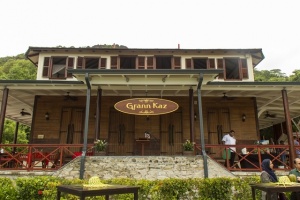Seychelles’ Silhouette island showcases museum from plantation era
Arts & Culture |Author: Rassin Vannier translated by: Betymie Bonnelame | February 23, 2019, Saturday @ 13:36| 9076 views
The area that was once the living room of the house - now the museum - tells the history of Silhouette. (Salifa Karapetyan, Seychelles News Agency)
(Seychelles News Agency) - Visitors to Silhouette -- Seychelles’ third-largest island -- can learn more about the colonial life in the island nation through exhibits in a museum renovated last year.
Since the beginning of the year, the Hilton Seychelles Labriz Resort and Spa located on Silhouette is raising awareness of the museum.
"We want to share with the community this part of the Seychelles’ history with the community and visitors, and also families with their children," André Borg, the resort’s general manager, told SNA.
 |
| The visit to the museum organised by the hotel includes lunch and boat transportation. (Nation) Photo License: CC-BY |
This activity allows visitors to come and spend a day with their families and learn about a period when agriculture was booming.
"It's good to see this period of time with Vasco da Gama and how the maps were made at that time, and to better understand how the Dauban family lived,” said Borg.
 |
 |
| The museum is in the completely renovated “Grann Kaz” -- the home of the Dauban family. (Salifa Karapetyan, Seychelles News Agency) Photo License: CC-BY |
The museum is located in the completely renovated “Grann Kaz” -- the home of the Dauban family -- which owned the island until 1960. The term Grann Kaz given to the houses of the French settlers were built on the acquired large plantations of coconuts.
A visit to the museum organised by Hilton Seychelles Labriz Resort and Spa includes lunch and boat transportation at a cost of $70 (SCR 950).
Silhouette Island is one of the richest biodiversity hotspots in the western Indian Ocean with many endemic and threatened plant and animal species. Conservation on the island is managed by the local Island Conservation Society.
Back
